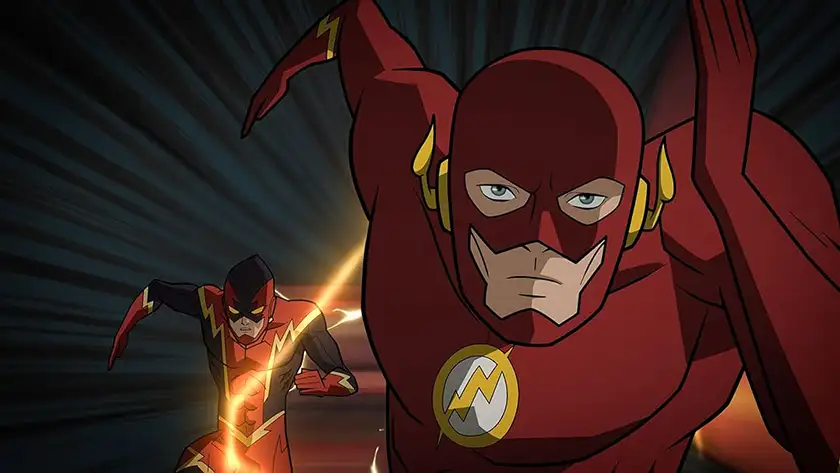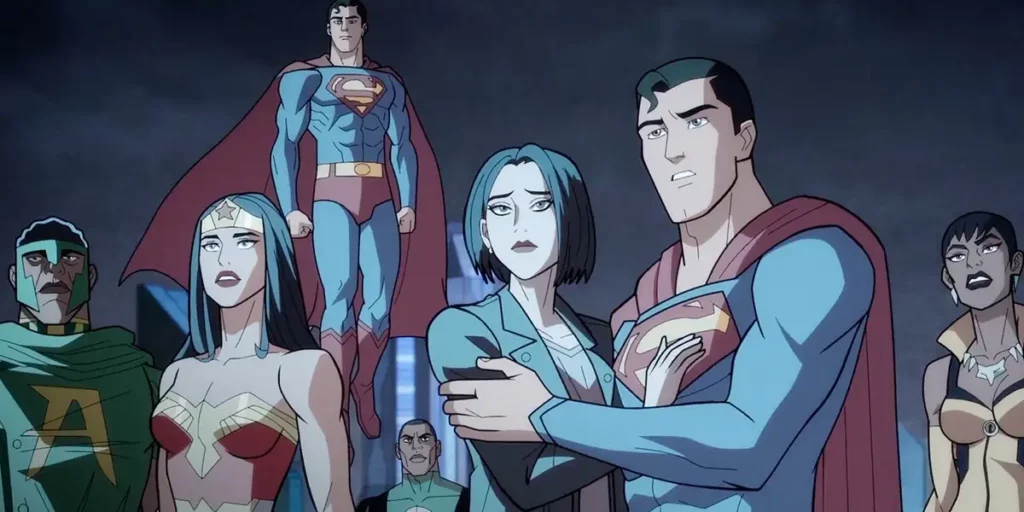Justice League: Crisis on Infinite Earths – Part One may have some fresh ideas, but it mostly feels like a mesh of everything wrong with superhero films today.
This doesn’t seem to be a particularly hot take in today’s climate, but I’m so sick of the multiverse. It may have been cool the first few times – I will always remember the first time I laid eyes on the lovable swine Spider-Ham – but now, whenever I’m watching a new superhero film and I see a portal start to open, I hear the distant sounds of a dead horse being beaten. I do understand the need for DC to wrap up their mostly uninteresting animated “Tomorrowverse” before James Gunn walks in and blows everything up that isn’t already directly linked to his projects, and it does at least feel like they’ve been building towards this for a while. Despite that though, Justice League: Crisis on Infinite Earths – Part One just feels like yet another in the excessively long line of multiversal films we’ve received recently.
It’s not just the multiversal elements that contribute to Justice League: Crisis on Infinite Earths – Part One feeling like the embodiment of everything wrong with mainstream cinema right now, there’s also the big elephant in the room known as its title. Why is this direct-to-VOD film a part 1? In some ways, I feel a bit dirty reviewing this now, because it unfortunately just is an incomplete product. It’s certainly setting something up involving dozens and dozens of different variations of the Justice League, but by the end it just feels like a character select screen you’d see in a video game. Everyone’s there, sure, they’re all exchanging one-liners in a big, vague sci-fi hub, but they’re not really doing much of anything there.
I’m over 200 words in now though, so I might as well attempt to review what’s actually in Justice League: Crisis on Infinite Earths – Part One. With that being said though, there is a reason I’ve been putting that off. If I’m being honest, I didn’t really understand much of what was going on. Now, just so I don’t seem like an old man shouting at an iPhone, I have watched all the previous “Tomorrowverse” films. I’m also a pretty avid reader of DC Comics, so theoretically, I should be able to wrap my head around this film. Yet, the way it’s told is just so peculiar. It simultaneously feels rushed and dragged out, constantly trying to justify itself being a part 1 whilst also needing to cover a lot of ground in what is ultimately a very complex story. Why this two-parter isn’t just a single 2 hour feature, I don’t understand.
Part of why the story is so confusing to follow is down to how it’s told, namely the fact that it’s non-linear. The Flash (Matt Bomer) is being sent through various moments in time, including the formation of the Justice League, his encounter with an alternate, evil version of the titular team, and his first encounter with this romantic interest, Iris West (Ashleigh LaThrop). This is an incredibly interesting and bold way to tell this story, constantly jumping from plot-point to plot-point but in a way that’s as disorienting to the main character as it is to the viewer, but at the same time, there’s a lot of complex ideas being thrown around quite loosely, and at a certain point, it can start to become overwhelming.

Now, one thing I do think that Justice League: Crisis on Infinite Earths – Part One does remarkably well is grounding its interdimensional story in a believable, emotional core. We care for Flash and Iris’ relationship, we see it grow, we see them age, we feel like we get to experience literal decades with them, and the way they handle that especially nearer the end of the film is genuinely quite heartfelt. Superheroes are often at their best when they’re taking human situations and experiences and applying them to high-concept scenarios, and here we get exactly that: a love story experienced by a man being dragged through time and space. This wacky, out-there storyline is given a heart and a reason for us to care about it beyond the generic and vague “end of the world” stakes, and I think that’s easily the most admirable thing about the film.
What I’m less keen on, then, is how a lot of that feels tossed to the side near the film’s conclusion, in order to move things to the previously-mentioned dull sci-fi dome filled with alternate Super Smash Bros-style costumes. It’s a fun way of linking all the previous “Tomorrowverse” movies, sure, and I imagine it will lead to some interesting situations and setpieces in the next film, but here and now, it just feels like Justice League: Crisis on Infinite Earths – Part One shifting into fan-service mode, when it’s spent the last hour building up a story that, whilst it may have been flawed, had some genuine merit to it. More than anything, it felt different to films like Spider-Man: Across the Spider-Verse (2023), which also happens to feature a sci-fi dome with lots of different variants in it.
Then, there’s also the recurring issue I’ve had with the entire “Tomorrowverse”, namely the fact that its animation never stops feeling cheap, even when you compare it to the other DC animated films that preceded it almost a decade ago. There’s so much potential for interesting visuals here, but they’re all just squandered so that everything can look almost identical, which feels like a sin when you’re making an animated film about the multiverse. I understand that the choice has been made to give these films an unchanging art style so that audiences can understand that these are different to the DC animated films of the past, but what that results in is a lot of movies that just don’t look all that great. It may solve one problem, but is it worth the ones it creates? I wouldn’t say so.
Maybe Justice League: Crisis on Infinite Earths – Part Two will come along and cure me of all my worries, and deliver a multiversal brawl unlike anything we’ve ever seen before, but until then, I have to judge this part based on what it’s given us so far. It’s not a totally awful film, it absolutely has its strengths and at least some interesting ideas, but at its worst, it just feels like a culmination of everything plaguing superhero media right now, and mainstream cinema in general. Perhaps it’s for the best that the “Tomorrowverse” is ending, because if there’s one thing it feels like DC’s animation needs right now, it’s just some new, fresh ideas.
Justice League: Crisis on Infinite Earths Part One is now available to watch on Max, on digital, and Blu-ray. Read our review of Justice League: Crisis on Infinite Earths Part Two.

